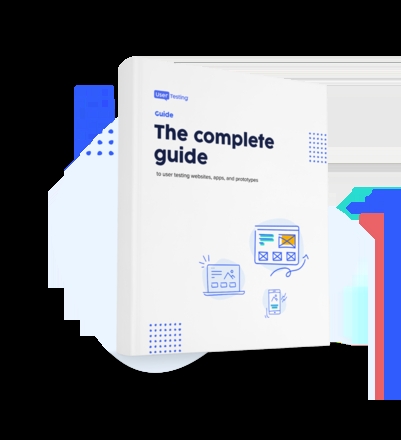
Effective UX research for wearable devices

Wearable devices are more popular than ever.
According to Statista, 29% of people in the U.S. (97 million individuals) used wearable devices in 2022 for interactive gaming, tracking their health and wellness, performance monitoring, and more.
This number is only expected to grow, so producing top-tier products is key for businesses in this highly competitive market. That means they need to take user experience design and research seriously.
When companies know what kind of UX trends consumers want, they can create better wearable devices, for a more diverse section of the consumer market.
What do we mean by 'wearable'?
Wearable devices, also known as wearable technology, are smart devices worn on the body or embedded in clothing.
Many wearable devices are available today, and the range is constantly expanding. Examples include:
- Fitness trackers
- Smart jewelry
- Smart clothing
- Pregnancy and fertility monitors
- Wearable blood pressure monitors
- Artificial intelligence (AI) hearing aids
- Augmented reality (AR) and Virtual reality (VR) headsets
Of course, your research will hone in on a select few. But it’s beneficial to consider the range of experiences across different devices. It’ll give you a general feel for wearables– how they should look and function to provide the best user experience.
Define your audience or user
As mentioned, you’ll likely have a specific wearable device you’re researching. Whatever device it is, you need to understand who will be using it.
You can define your audience or ideal user with detailed user personas. Document details about who this person is, how they think, what they do, and why they would use this specific device.
Dig into demographic, psychographic, and behavioral data as well. You can find this data mainly from previous customer data and any customers that have interacted with your digital media.
Examine where and how the wearable device is worn and used
With your ideal user in mind, you also want to examine where and how they would wear and use your wearable device.
For example, AR/VR wearables are used with IoT applications. Companies use VR in the onboarding process for remote workers. 3D data visualizations and digital twins are better created and understood when VR and IoT devices are connected.
Wearable device integration is also making its way into automobiles. For instance, some smartwatches allow users to unlock their cars. Drowsiness detection systems can determine if a driver needs to take a break based on eye movements or frequent jerking.
When researching, you must consider as many use cases as possible to ensure functionality and value to the consumer.
Make a list of potential uses for a device, ways to wear it, and where. Think outside of the box regarding these criteria to ensure you develop a well-rounded view of the best UX.
Analyze the apps designed for wearable devices
Wearable devices aren’t stand-alone products - they usually need another device to function fully, and will typically come with apps to ensure users get the most out of them.
It’s best to start by analyzing those apps. This is essential because if the wearable device and app don’t work together, it will hinder the UX.
- What can you do on the app via the wearable device?
- What can you do on the app via your smartphone?
- How does the app’s wearable device experience differ from the one you have on your smartphone?
- How can you enhance the app to aid the wearable’s functionality?
Answering these questions will help you create an app experience that adds to your wearable device rather than detracts from it.
Study the experience across devices
Simply put, you can’t do everything from a wearable device. The small screen (or lack thereof) limits users in what they can do. So, users must be able to connect their wearable devices to a larger device, like their smartphone or laptop, to get full functionality and a complete experience.
Therefore, your research must extend to the devices your wearable can connect to.
You need to see how the experience unfolds once a user connects their device to another one. Is it cohesive? Is it needed? Is the data transfer seamless? What can and can’t they do?
If a wearable device must be connected to others, you must ensure those other devices provide a great experience as well.
Lean on user testing
Don’t depend solely on what you think or data you’ve collected through tools when doing UX research. Although these can offer great initial insights, they aren’t as powerful as the feedback you get from users.
Lean heavily on user testing to round out your efforts. Put together focus groups of diverse individuals and call on them for help at various points in the production process.
Have them test the core functionality of your wearable device. Engage them in accessibility testing to ensure the device works for people living with different disabilities. Ask them to give you feedback on the design and feel of your wearable device, its accompanying apps, and devices.
There’s nothing more useful than feedback from actual users.
Conclusion
Wearable devices are growing in popularity. Companies that produce them must ensure their devices are relevant and meet evolving consumer wants and needs. Luckily, effective UX research can help.
Consider the various wearable devices out there first. Next, define your ideal users and examine how they use and wear your wearable device. Analyze the apps designed for your wearable device as well as the experience across the devices it connects to.
And finally, lean on user testing to understand how actual users experience your wearable device.

Get started with experience research
Everything you need to know to effectively plan, conduct, and analyze remote experience research.





